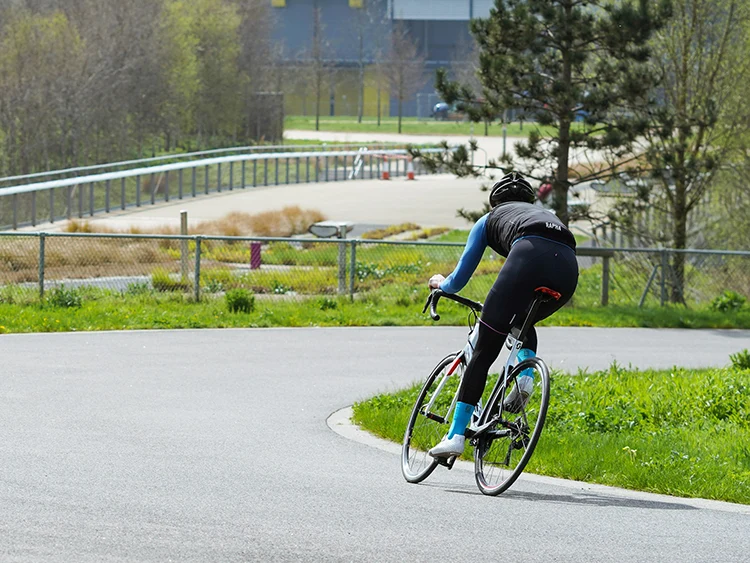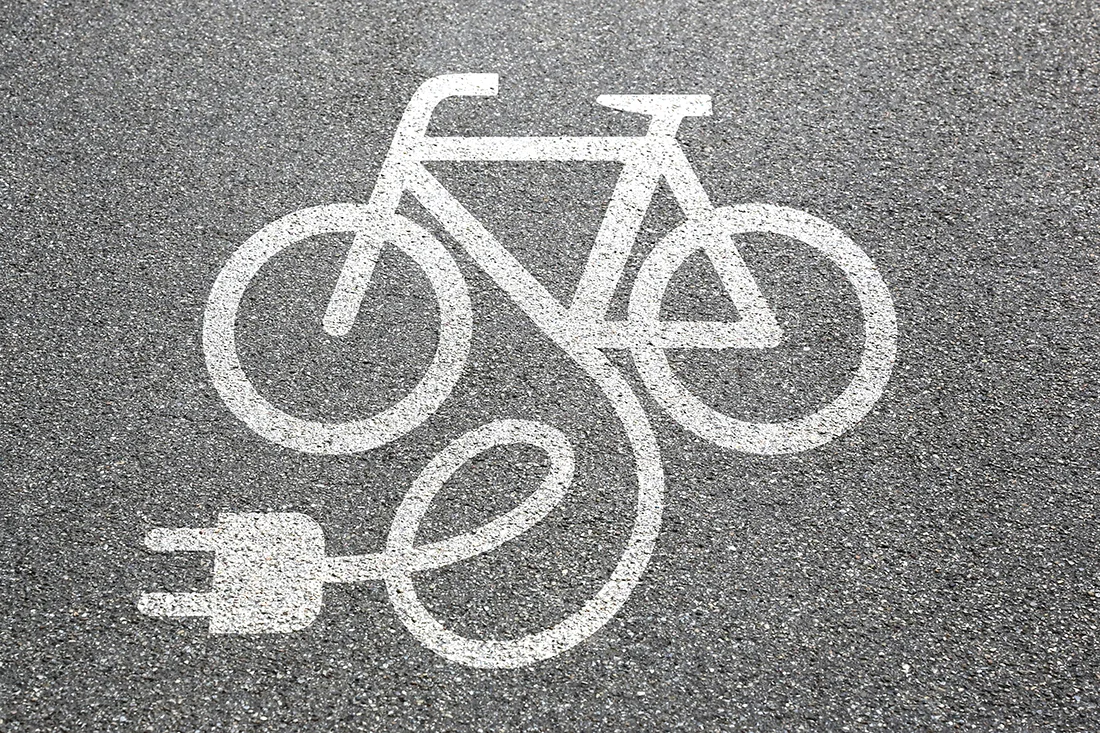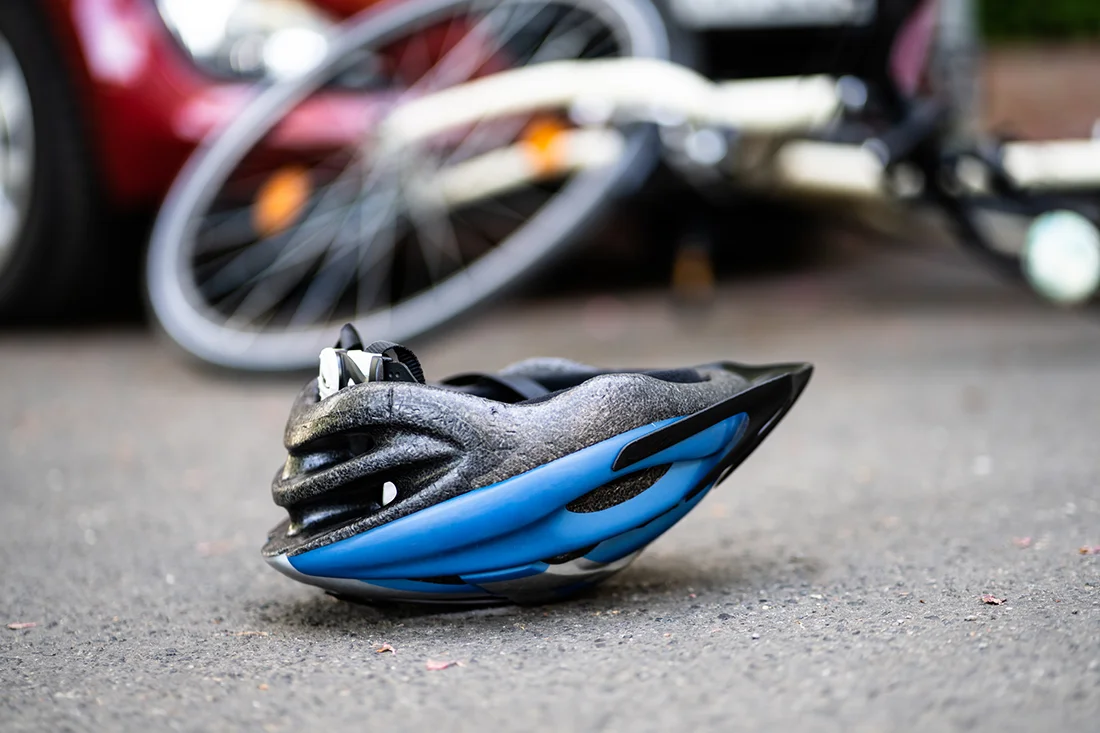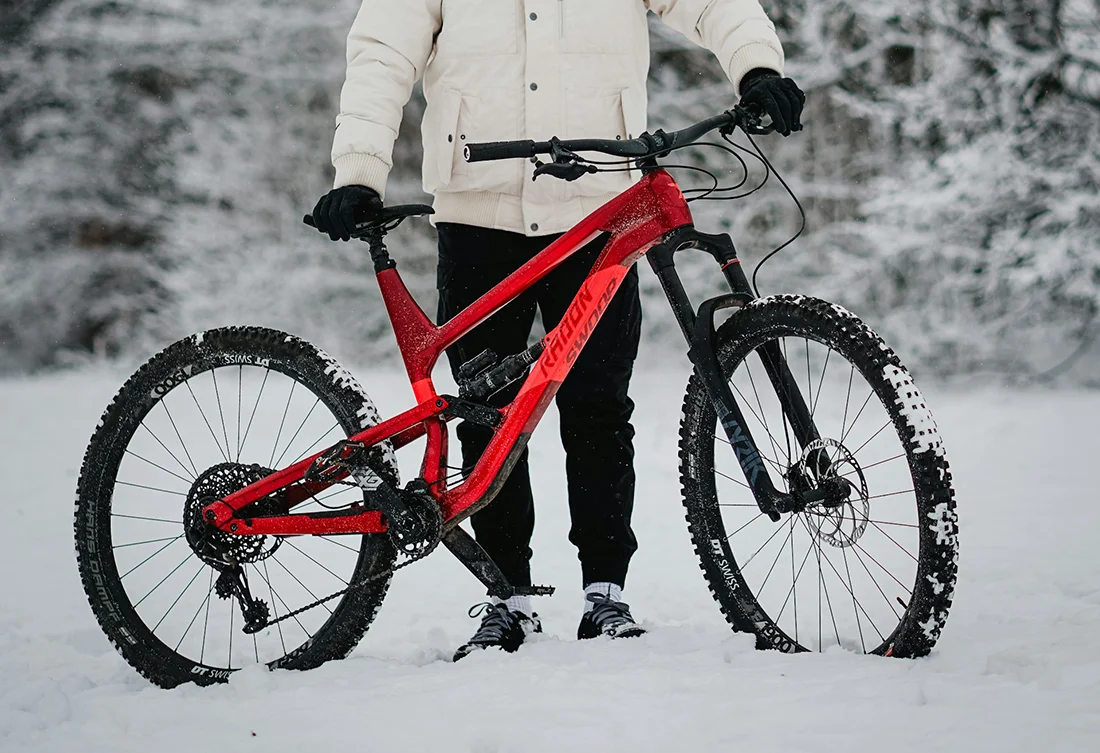Let’s talk about Sweetspot and Threshold workouts. It’s the age-old question: How do you get faster?
Believe it or not, there’s actually an easy answer: Ride hard sometimes, and easy often. Simple as that! Now go on and try high-intensity interval training, and you’ll be a Tour de France champion in no time.
Of course, it’s a bit more complicated than that, which is why we have created this guide that explains the differences between sweetspot training and threshold training.
Contents
What Is Sweetspot Training?
Sweetspot:
- RPE: 6/10
- Upper end of zone 3 and lower end of zone 4
- 75-85% of maximum heart rate
- 84% to 97% of FTP

Sweetspot can best be described as “comfortably uncomfortable.” The sweet spot training zone is an in-between zone that is certainly hard, but also something you can sustain for a long time. Sweetspot intervals are typically 8 to 60 minutes long. An example Sweetspot workout could be 3x20min at 84-97% FTP with 5 minutes rest.
According to Overton, “the underlying principle of Sweet Spot training is a balanced amount of training intensity and volume.”
Benefits of Sweetspot Workouts
Training in the Sweetspot zone will lead to physiological adaptations such as:
- Improved aerobic fitness
- Increased lactate threshold
- Increased VO2 max
- Increased plasma volume
- Increased stroke volume
- Increased muscle glycogen storage
- Hypertrophy of slow twitch muscle fibers
The breadth of benefits from Sweetspot training is massive, and all of these factors can lead to key performance gains on the bike.
However, Sweetspot training misses out on a number of important physiological metrics that affect cycling performance.
Sweetspot training does not:
- Increase neuromuscular power
- Increase ATP/PCr stores (high energy muscle)
- Increase anaerobic capacities
- Lead to hypertrophy of fast-twitch muscle fibers
In summary, you should not do too much sweet spot training as it will not help increase your sub-8-minute power (threshold intervals, anaerobic VO2 max efforts, and sprints).
What Is Threshold Training?
Threshold:
- RPE: 8/10
- Zone 4
- 85-95% of HRmax
- 91% to 105% of FTP
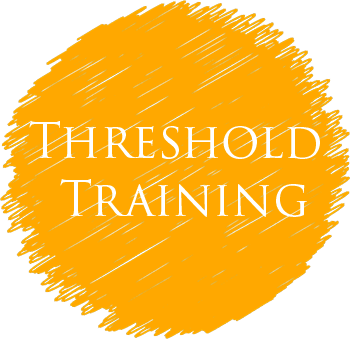
The goal of threshold training is to improve your FTP. Without getting too entangled with the scientific weeds, FTP roughly correlates with your lactate threshold, which is the exercise intensity at which your muscles begin to accumulate an unsustainable amount of lactate.
After about an hour – hence the 60-minute FTP – the body can no longer shuttle the lactate out of the muscles, and the body can no longer sustain the desired effort.
Threshold intervals target 91-105% of your FTP and are designed to increase your FTP/threshold. Most threshold training sessions target a total of 20-60 minutes spent in the threshold training zone. For example, a threshold training session could consist of 4×15 minute intervals at 91-105% of your FTP.
At the beginning of the season, when fitness is at its lowest point, you may target 91-95% of your FTP. Later, in the peak of the race season, you may want to target 95-105% of your FTP during these threshold intervals in order to really push yourself and get the most out of each and every interval.
Benefits of Threshold workouts
Training in Threshold will lead to physiological adaptations such as:
- Increased lactate threshold
- Increased VO2max
- Increased plasma volume
- Increased stroke volume
- Increased muscle glycogen storage
- Hypertrophy of slow twitch muscle fibers
- AND increased neuromuscular power
- AND increased ATP/PCr stores (high energy muscle)
- AND increased anaerobic capacities
- AND lead to hypertrophy of fast-twitch muscle fibers
With Threshold training, you get all the physiological adaptations of Sweetspot training plus another handful of adaptations. The major downside to Threshold training, however, is that it is incredibly taxing on both the body and mind. For almost every cyclist, it is detrimental to perform Threshold intervals more than one day at a time. The body just can’t recover fast enough.
When you need more time to recover in between training sessions, you are losing out on potential performance gains.
Think of it like this: if you can only perform at your best for 4 Sweetspot workouts per week, or 2 Threshold workouts per week, which one would you choose?
How can you get the most out of your training? Many athletes find it best to go with Sweetspot. More hard intervals, more training stress, and a higher training load lead to more performance gains when coupled with adequate rest.
Training for Endurance
Endurance sports training is simultaneously one of the easiest and hardest things in the world to master. Those who ride more typically do better – they can ride further, faster, and more efficiently than anyone else.
By doing long endurance training sessions at low intensity, you improve your mitochondrial density, and the stimulus allows your mitochondria to use energy more efficiently and allow you to ride for longer.
So why don’t people just ride more?
There’s simply not enough time in our days to train for two, three or four hours. Most of us can just handle one hour a day, and two on the weekends. That is about 10 hours of training per week. Most professional cyclists ride long duration 15-25-hour weeks year-round. Only the best in the world topping 30-40 hours/week during their biggest training or racing blocks. It is their full-time job after all!
There’s simply not enough time in our days for longer duration workouts.
The rest of us can’t handle that amount of time on the bike, not even close. Instead, we choose high-intensity workouts and structured training sessions to get the most out of the limited training time we have and improve our endurance pace.
There are top-level amateurs who compete on 8-12 hours of higher intensity weekly training, with power numbers that nearly match the pros. The biggest difference between amateurs and professionals, in this regard, is repeatability, day after day, and week after week… But that’s a topic for a whole other article.
Related: How To Improve Your Cycling
How Do I Maximize My Fitness Gains in Only a Few Hours per Week?
The answer is intervals. Riding hard for a specific amount of time, then taking a short rest period, and then repeating the hard interval. These can be sprints, tempo, sweetspot, threshold, or VO2 Max efforts; basically, anything harder than endurance (i.e. Zone 1-Zone 2) pace. (But make sure to add some strength training to your plans.)
Related: Strength Training for Cyclists
For the purposes of this article, we’re going to look at Sweetspot and Threshold intervals, the similarities and differences between them, and which is better.
But before we dive into the details, we have to understand how to use RPE, heart rate bpm, and power training zones.
RPE
RPE stands for ‘Rate of Perceived Exertion’ – In other words, it’s how hard you feel like you’re going. The Borg scale was the original RPE scale, beginning at 6 meaning ‘no exertion’, and ending at 20 meaning ‘maximal effort.’

The reason that the scale starts at 6 instead of zero, and goes from 6 to 20, is that these numbers roughly correlate with an athlete’s heart rate when multiplied by a factor of 10.
The modified (and easier to understand) RPE scale goes from 0 to 10, with 0 being ‘no exertion’ and 10 being ‘maximal exertion.’
The RPE scale is a great tool for measuring sweetspot intensity because it is free, easy to use, requires no extra devices, and you can use it anytime and anywhere.
However, the RPE scale is not very scientific or accurate because it is so easily influenced by the athlete’s emotions. All the RPE scale does is ask you how you feel. There is no output measurement or physiological metric being measured.
When you’re just getting into sports, the RPE scale is the best place to start, with no investment required. You just think about it, literally!
Heart Rate (HR)
There are two main ways that cyclists can scientifically measure their physiological effort: heart rate monitors, and power meters. First, we’ll take a look at heart rate monitors, which are typically straps that athletes wear around their chest, wrist, or forearm.
HR monitors tell you how hard your cardiovascular system is working.
With a few simple calculations using your resting HR and Max HR, you can calculate your HR zones and apply them to your cycling training plan. In time, you will be able to analyze your HR data and trends to determine how fit you are, how well recovered you are, and recognize signs of overtraining.
Related: How to Avoid Overtraining
One of the biggest downsides of using HR data is that it is dependent on a large number of physiological and psychological factors such as mood, caffeine, use, illness, fatigue, heat, and cold.
If you’ve ever used an HR monitor before, you will know about another phenomenon called HR lag. This is when you experience a sudden change of intensity (e.g. starting a Threshold interval), and it takes a minute or two for your threshold heart rate to rise to the expected level of intensity. This makes it impossible to use HR data for short intervals, only for long sweet spot interval sessions.
Since we are looking at Sweetspot and Threshold intervals in this article, let’s take a look at the HR training zones, and where each of these intensities fall.
- Zone 1: 60-65% of HRmax
- Zone 2: 65-75% of HRmax
- Zone 3: 75-82% of HRmax
- Zone 4: 82-89% of HRmax
- Zone 5: 89-100% of HRmax
Power
Power meters are the most popular data collection tool in cycling – other than head units – and for good reason. They measure the amount of power that you are putting into the pedals, each and every second of your ride, expressed in Watts.
Power is what drives the crank forward, and thus propels the bike. Pedaling hard means more power, and more power means more speed! In general, the higher your power output, the faster you go.
Related: Best Power Meters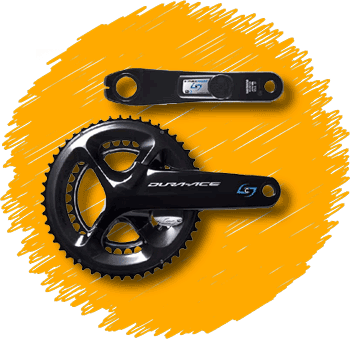
Formerly a significant investment, the price of power meters has been seriously cut down in the last few years, making them much more appealing to the masses.
One big advantage that power meters have over heart rate monitors is that they produce consistent data (assuming correct calibration). While HR is influenced by a number of factors (as discussed above), power meters consistently measure the same thing, in the same way, all the time.
Unlike HR monitors, power meters also help you see progress – as your fitness improves, your power goes up, and you get faster. With very few exceptions, your HR data (resting, exercising, and maximum HR) will always be roughly the same, no matter how fit you are.
Power meters are also great for short-duration intervals such as sprints or Tabatas (40/20s) because the moment you stomp on the pedals, the power goes up, giving you immediate feedback instead of HR lag.
The biggest drawback of power meters is that they are more expensive and difficult to set up compared to HR monitors. With a chest strap and head unit, you can use an HR monitor on any bike and anywhere. Heck, you can even use it on a hotel spin bike or a trainer at home!
Read more: Power to Weight Ratio Explained
How Do Power Meters Work?
A power meter is usually attached to the crank or the pedal and thus needs to be installed on one bike. Once you get it all together, a power meter is a fantastic training tool; but getting it set up can be a little annoying.
While we used maxHR to determine our HR training zones, we will use Functional Threshold Power (FTP) to calculate our power training zones, not our maximum power. Your FTP is, in theory, the maximum average power that you can sustain for one hour.
In order to determine your FTP, you will need to complete an FTP test, which can be either a ramp test, 20-minute effort, or 60-minute effort. You can find the protocol for a 20-minute FTP test in this article.
Once you know your FTP, you can calculate your power training zones using a five-zone model like we used for our HR training zones.
- Zone 1: 56-75% of FTP
- Zone 2: 75-90% of FTP
- Zone 3: 90-105% of FTP
- Zone 4: 105-120 of FTP
- Zone 5: 120+% of FTP
According to Frank Overton – founder of FasCat Coaching and coiner of the term ‘Sweetspot’ – “the Sweet Spot is located between high zone 3 and low zone 4: between 84% to 97% of your FTP.” By definition, we can see that Sweetspot actually falls into Zone 3 based on our five-zone model. What we will find is that the duration and intensity of the sweetspot intervals will be more than enough to elicit a significant training response.
Heart Rate vs. Power for Sweetspot Training
The Sweet spot zone is between Zone 3 and Zone 4 and is defined as 75-85% HRmax. We’ll take a closer look at some Sweetspot workouts in a second, but first, let’s look at some major differences between HR monitors and power meters.
It’s often forgotten that heart rate monitors and power meters measure two different things: heart rate monitors measure an internal training load, while power meters measure an external training load.
Being an internal measurement, a heart rate monitor will tell you how hard your cardiovascular system is working, without telling you anything about your physiological output (i.e. the power you are putting into the pedals).
For example, a beginner-level cyclist and a professional rider could both be pedaling at 95% of their maxHR; but that doesn’t tell you anything about their physiological performance. The beginner could be pedaling at 150w, while the pro could be pushing 350w.
Sweetspot is between Zone 3 and Zone 4, and is defined as 75-85% HRmax.
Probably the biggest limiting factor of HR data is that you cannot use it to compare two different athletes. Each one of us has a different resting HR, threshold HR, and maximum HR – when comparing one athlete to another, HR data tells us nothing.
On the other hand, power is one of the defining metrics of cycling. Becoming increasingly important as the road tips uphill, the power-to-weight ratio is one of the most popular and talked about measurements in cycling, and what separates amateurs from professionals.
Conclusion
While we are still waiting for studies to confirm, it seems as though Sweetspot training has taken over the world of cycling.
Anecdotally, millions of cyclists around the world have experienced better results, better recovery, and less fatigue from Sweetspot workouts vs Threshold workouts.
Both offer their own unique benefits, yet there is still a significant amount of overlap between their target intensities, the difficulty of their workouts, and the impending results.
By doing Sweetspot or Threshold intervals twice per week, you can increase your lactate threshold, VO2 max, stroke volume, plasma volume, and muscle glycogen storage – all of these are key performance metrics that can directly translate to increased cycling performance.
The key difference is that cyclists can recover from a sweet spot workout much quicker and more effectively than from a threshold workout.
By stacking sweetspot workouts on top of each other, two, or maybe even three days in a row, cyclists can achieve more physiological adaptations from sweetspot training than any other kind.
So what are you waiting for? Get out there and sweetspot!
Want to learn more about cycling training and threshold intervals? Take a look at our Complete Guide to Cycling Workouts.

